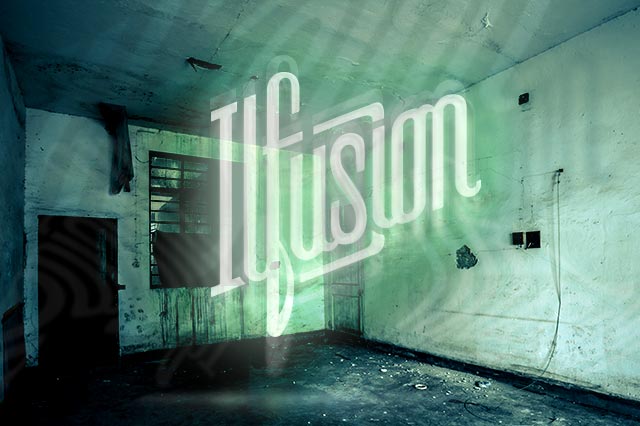Brand Identity and the specter of subjectivity
 July 15, 2014 | By Ilfusion Team
July 15, 2014 | By Ilfusion Team
Your logo is important, that’s a given. With that understanding, what is reasonable to ask of a logo? What are realistic expectations of what your logo should communicate?
Visual brand identity is a tool. It’s a conduit for connection with your brand as a whole. Notice that I didn’t say your logo is your brand, because it isn’t.
Your overall brand is a concept, not a piece of art, or a building or an assembly of great people all working together to attain a common goal. Your brand is an abstract construct of your customer, and your control of that nebulous idea in someone else’s head is limited to what you say, how consistent you are in delivering that message, and the actions of your company, from the big picture, to operations, to your customer service representatives.
So, bringing the focus back to visual brand identity, and more specifically, your logo…
With the understanding that it is not your brand in total, the logo is the most singular tangible artifact of your brand. One that serves as a shorthand for that concept in your customer’s mind.
Great logos are:
– Thoughtful. Not crowdsourced or “whipped up” by your nephew Scotty who’s taken 6 hours of design in college.
– Differentiated. They’ve got to stand out among your competition, and while we’re at it, let’s consider some other colors besides blue and grey, shall we?
– Referential. It’s not realistic to expect that all of your message can be crammed into a handful of letters and perhaps a few straight and/or curvy lines, but it should work well with your message in concept.
Lastly, but certainly not least, let’s talk about subjectivity. A good referee or judge is objective. They put their personal feelings aside and make a call on the facts presented. For better or worse, neither you, nor your customer are equipped to judge a brand objectively. Instead, a host of nature/nurture factors are at play that influence something as inherently subjective as art and design.
The best brand identity is designed with this in mind, and adheres to an established process that is engineered to compensate. Here’s a brief snapshot of this process:
Concept Phase. We’ve already talked about how logos can’t say everything, but they can and should reference your message. They use concepts to relate to your message in a meaningful way. The first presentation in logo design at Ilfusion includes exactly zero new artwork for your consideration. Instead, it provides concepts that are meaningful to your brand as a whole.
Black & White Idea Phase: Original art presented in its most basic form. This is important because a logo must function at its basest elements. Need to print it tiny in one color on a pen to give away at a trade show? Careful attention must be paid to make sure that it works. At this stage, each version is referencing one agreed-upon concept from the first phase. From here we iterate until we arrive on a final solution.
Color Application Phase: Now things start getting real. In most instances, the logos we design follow a Brand Architecture message project where, in addition to defining Who, What, How and Why, the language used to communicate with the target audience, we also take an in-depth look at the competition. This includes a Competitive Color Wheel analysis where the competing brands are plotted on the ROYGBIV color wheel. This is a tremendously useful tool to graphically represent where the competitors fall on the wheel, and helps identify areas of opportunity for differentiation.
For examples, let’s look to the car industry:
Acura
The Acura logo, while obviously depicting a stylized “A”, is also a set of calipers, conceptually communicating a message of precision in design and engineering.

BMW
Some circles, some lines, some letters… it’s certainly iconic, and is a logo that functions at a high level, but where did it come from? Bavarian Motor Works started as an airplane engine manufacturer. Those alternating blue-white segments within a circle are the visual representation of rotating propeller blades and the colors reference the Bavarian flag. For a brand with a long and storied history, legacy means something, even if a car’s logo is referencing long-past airplane roots. Meaningful, right? Feel more connected to that brand now?

Infiniti
It’s no mistake that two of the three logos referenced here are for relatively new brands. As brand management and design has become more sophisticated, so too have the results, and you can be sure that a lot of thoughtful work has been put into these newer brand identities. In the case of Infiniti, the brand was one of a few Japanese makes that entered into the luxury car market some 25 years ago. To communicate this, and establish themselves as the Ruler Brand Archetype, Infiniti has adopted a powerful symbol in Japanese culture: Mount Fuji, to position Infiniti as the pinnacle of luxury motoring.

As some wise wordsmith once said, “beauty is in the eye of the beholder” (or “beer holder”, if you prefer). No matter how pleasing, someone hates your logo for no good reason no matter who you are. Likewise, when judging the results of a logo design project, you may have some subjective reaction to what is being presented. Try to put yourself in an objective space that has you considering less your personal taste, and more the goals of the exercise. Directing that your logo be cornflower blue because that’s your Grandma’s favorite color is not good enough. But if Grandma started your company wearing her favorite cornflower blue apron, that’s something that your target audience can identify with. That’s objectively meaningful.
If you’d like to embark on the adventure of defining your brand with meaning, contact us at 888.420.5115 or email at cr******@******on.com.
Filed in: Articles, Featured, Marketing

